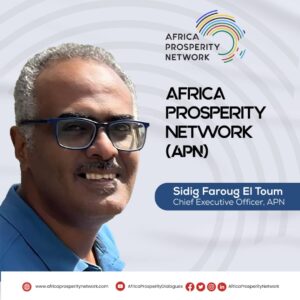
By Kwasi Frimpong
This article was first published by kessbenfm.com on April 12, 2017
Minerals have always been in Ghana. Before 1471, when the first white Europeans found their feet on this land, the land was already mineral filled. These Visitors from outside Africa named Ghana ‘Gold Coast’ because they could literally see and pick gold from the sand. Extraction of gold therefore began long before the Europeans arrived in Ghana in 1471.
It is estimated that between 1471 and 1888, 14 million ounces of gold (35,000 ounces per annum) were produced. (WACAM, 2012)
Artisanal mining popularly referred to as ‘galamsey’ by indigenous people pre-dates the period of contact with foreigners, who landed on our shores to trade in gold, ivory and slaves. Mining (galamsey) was however carried out as an off-season economic activity on marginal lands by people who were mainly farmers.
The indigenous methods of gold mining used then have been described as superior because of the zero usage of chemicals and the absence of heavy machinery.
Rivers and sacred sites were adequately protected through religious beliefs and the conflict between mining and other land use systems was very minimal because the Farmer-Miners did not want their off-season mining activities on marginal lands to destroy their capacity to sustain their farming activities.( Owusu-Koranteng D. et al, 2017)
Large-scale mining then started around1880 at Tarkwa and 1898 at Obuasi.(WACAM, 2012)
As at 1983, 5 mining companies operated in Ghana, 13 companies operated in the 1990s; the Government granted more than 200 mining leases resulting in mining companies holding 30% of the country’s land surface area in mining concessions (Vital Statistics, 1998).
The surface mining operations create a major land use conflict between farming and mining, where large tracts of fertile farmlands are ceded to mining companies for surface mining operations. For example, AngloGold Ashanti (Obuasi Mine) control almost 400km2 land as its concession. (Owusu-Koranteng D. et al, 2017)
With all of these mining companies flooding our forests and shores, it is expected that the country and the people will benefit from the business. However, the opposite has been the case.
Ross (2001) indicates that most of the world’s mineral-dependent states are concentrated in sub-Saharan Africa and an initial assessment suggests that the economies of these countries are not performing well. According Ross, twelve of the world’s most mineral-dependent states including Ghana and six of the world’s 25 most oil-dependent states are classified by the World Bank as “Highly –Indebted Poor Countries” (Ross Michael 2001).
An assessment of the performance of Mining in Ghana by the World Bank’s Operations Evaluation Department (OED) stated the following:
“It is unclear what gold mining true benefits are to Ghana. Large scale mining by foreign companies has high import content and produces only modest amounts of net foreign exchange for Ghana after accounting for all its outflows. Similarly, its corporate tax payments are low due to various fiscal incentives necessary to attract and retain foreign investors. Employment creation is also modest given the highly capital intensive nature of modern surface mining techniques. Local communities affected by large scale mining have seen little benefits to date in the form of improved infrastructure or services provision because much of the rents from mining are used to finance recurrent, not capital expenditure. A broader cost-benefit analysis of large scale mining that factors in social and environmental costs and includes consultations with the affected communities needs to be undertaken before granting future production licences” (http://www-wds.worldbank.org/servelt/WDS_IBank_Servlet…)
According to Aryeetey et.al.(2004) liberalisation of the mining sector in Ghana has generally led to a decrease in employment partly as a result of the new technologies and the labour rationalisation introduced into the sector and partly because of the weak linkages of mining with other sectors of the economy. Aryeetey further posits that the closer you get to the mining communities, the poorer the people become.
The blame game being played between the so-called legal and illegal (Galamsey) on water and environmental pollution rages on. The simple truth is that both legal and illegal mining operations have contributed to the pollution of our river bodies. Mining, whether licensed or unlicensed is characterized by series of problems. (Frimpong, K. 2012) Indeed, artisanal mining “Galamsey” has seen tremendous change in the period of the third gold rush.
Artisanal mining, which used to be a pickaxe and shovel activity with the use of mercury for gold extraction on a lower scale has become a medium to large-scale mining operations based on heavy machinery and the use of the heap leach method, which goes with the use of cyanide, has become the standard practice for “Galamsey” operators.
The lessons on the use of cyanide for processing of gold and heavy machinery for excavation have been learnt by artisanal miners from the operations of large surface mines by multinational mining companies. (Owusu-Koranteng D. et al, 2017)
The level of displacement of indigenous people from their lands and the payment of low compensation by mining companies, have served as push factors for many agrarian based communities, especially the youth, into illegal mining operations.
The Writer is a journalist, student leader, youth/political activist
Kwasi Frimpong
+233201833775







